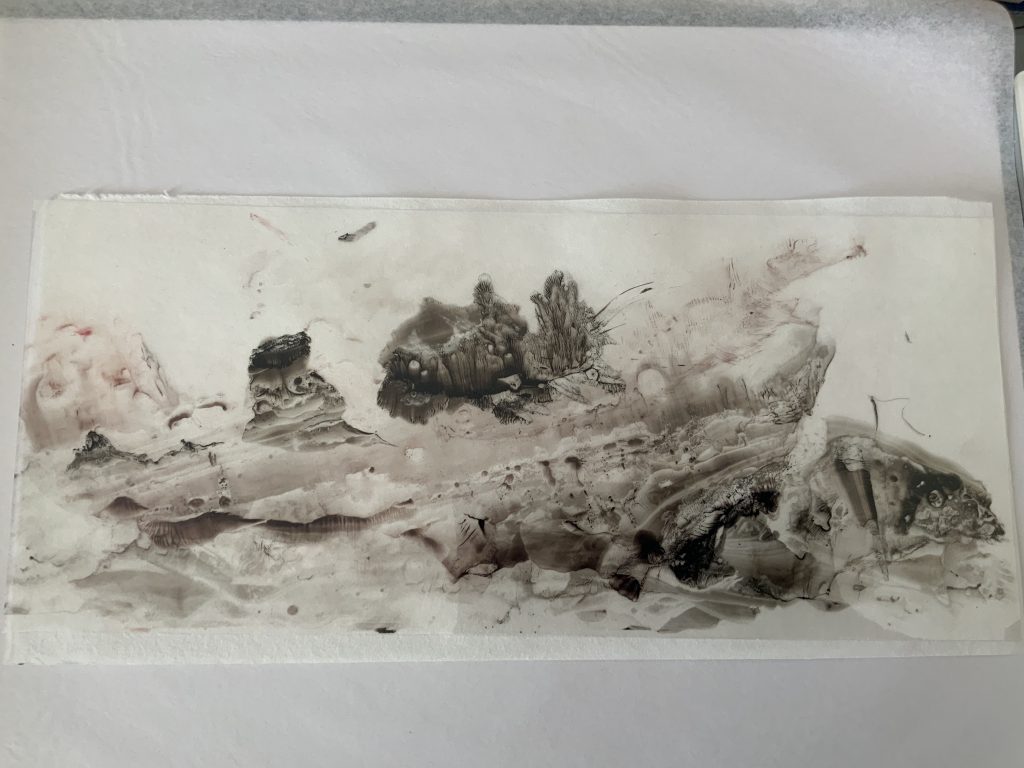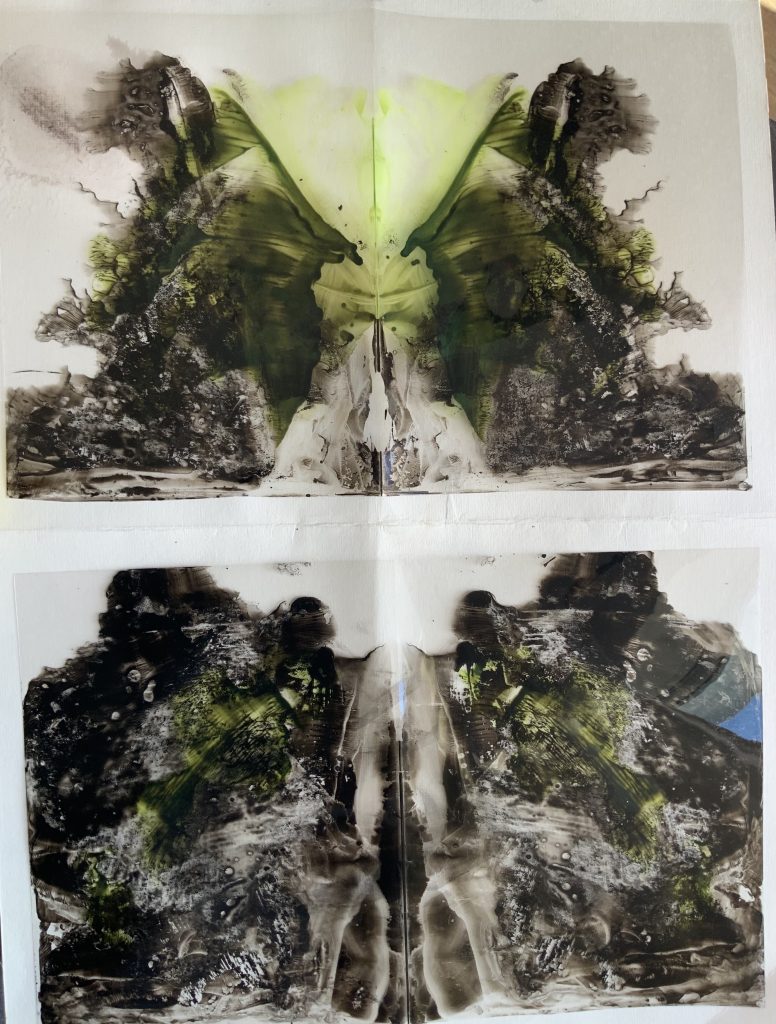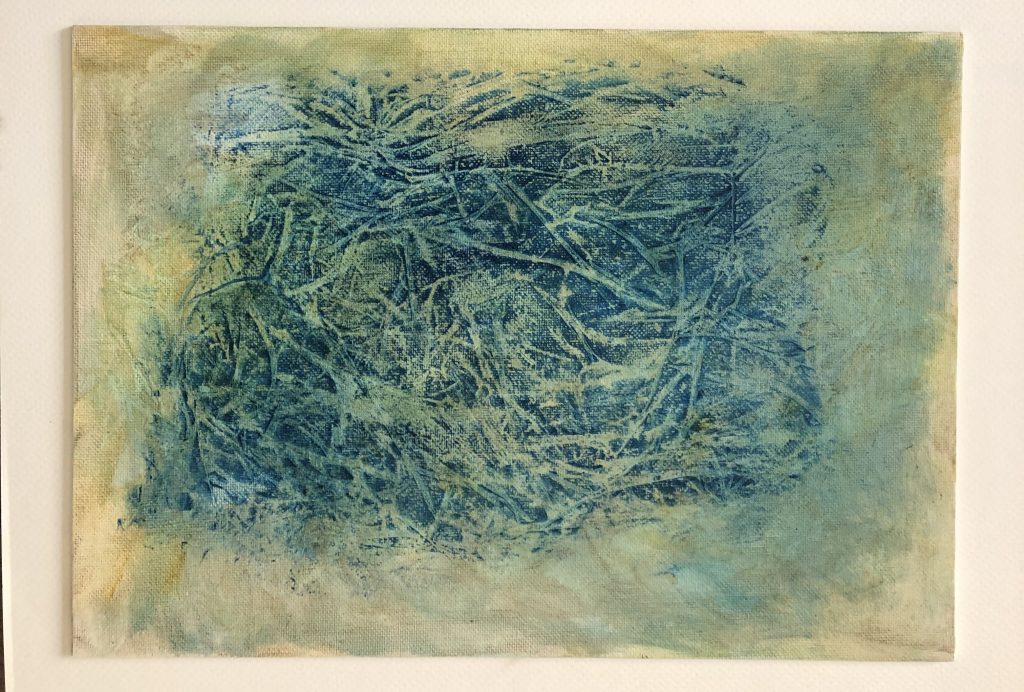Explore the works of the following two artists online and make notes on their approaches in your learning log:
- Shen Wei artist/choreographer
- Tony Orrico
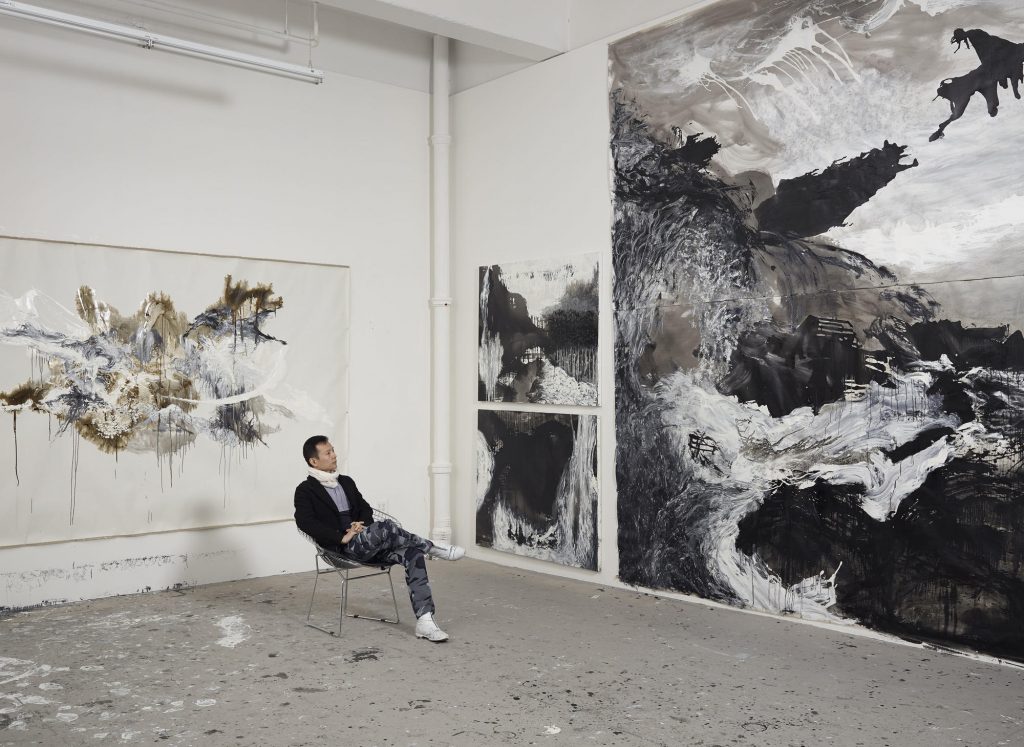
The artist in his New York studio, 2014. Photo © Jeffrey Sturges
It seems that for the artist, Shen Wei, his own ideas come into his work as themes of mindfulness, spiritual connection, and cultural understanding. More reading material was found on the Gardner Museum’s online archives. He uses different painting materials, like oil, acrylic, and ink in one work. His techniques are brushstrokes and drips. In the process, the way the material interacts plays a role when the works show shifting forms that evoke natural elements like mountains, clouds. The scale of the work attacks me – reminds me of my own small explorations. (see images below) and take me to the question of why I did not consider making bigger and bolder works during the exercises.
I was particularly excited about the two works (below) around exploring marks – how he used his own body.
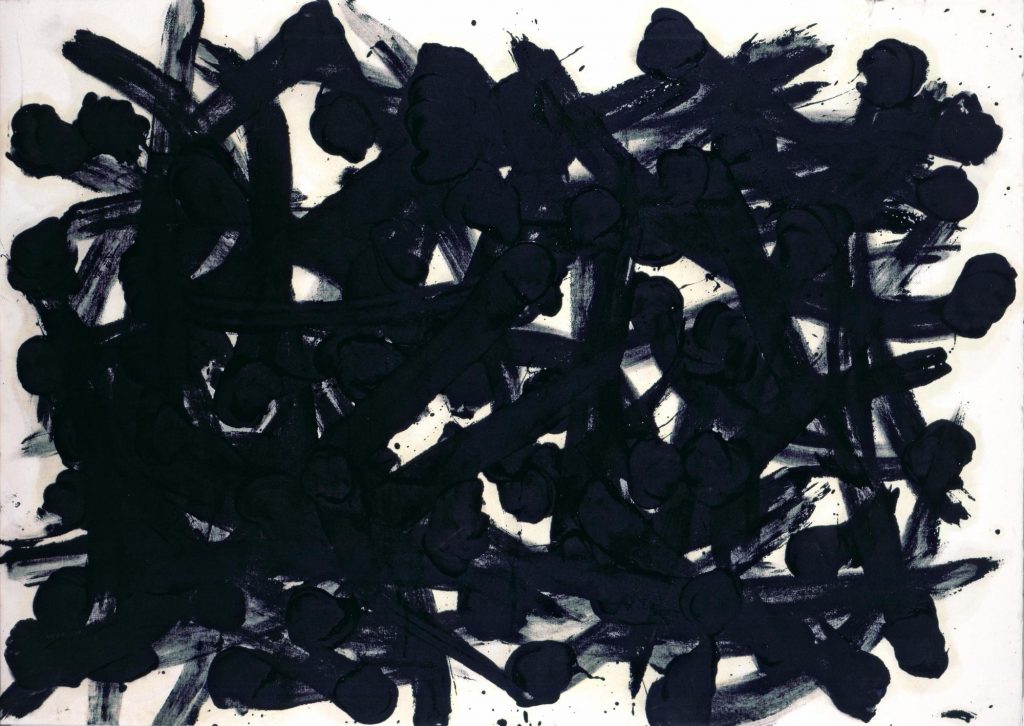
Movement number 5 (slide turn A in black) 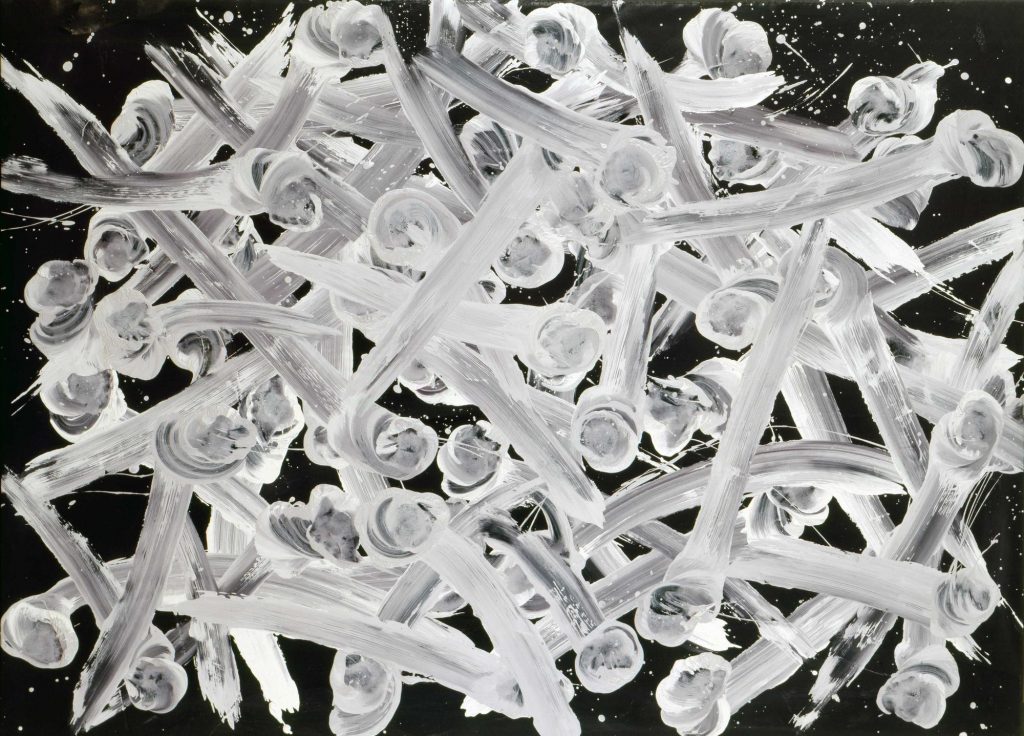
Movement number 6 (slide turn B in gray)
These two paintings are earlier works and one sees how the artist is exploring movement with paint and to consider, or to create abstract work. On his website, I found an article written about the above works and here it is stated that he was being to consider ‘way in which the capturing of movement could coexist with a greater sense of depth and space.” (Mao, 2007) He apparently covered the soles of his feet in oil paint. On the canvas is a recorded mark-making of the movement of his feet, presented on a contrasting background. It was done whilst he was listening to the music (of Bach or Mozart?) and dancing. I learnt that dance is the most ephemeral of the arts – dancers leave very little behind…In these two works, the artist lets the viewer see the slips and slides, as well as turns, in the paint. The images are pushing the edges of the canvas and remind me of the exercises suggested in this course – an amazingly innovative way to explore my own walking with the materiality of paint.
Below is an example of Wei’s integration of color into his paintings, the Suspension in Blue series. Again one sees energy in the work. Does it look as if he brings in the ocean? I find more brushmarks in the work. I consider the fact that he worked with acrylic on linen, did he add water (washes) to make the paint more fluent and create an effect of the ethereal? In some of the work in this series, he mixed oil and acrylic – for an effect of the interaction of these two materials?
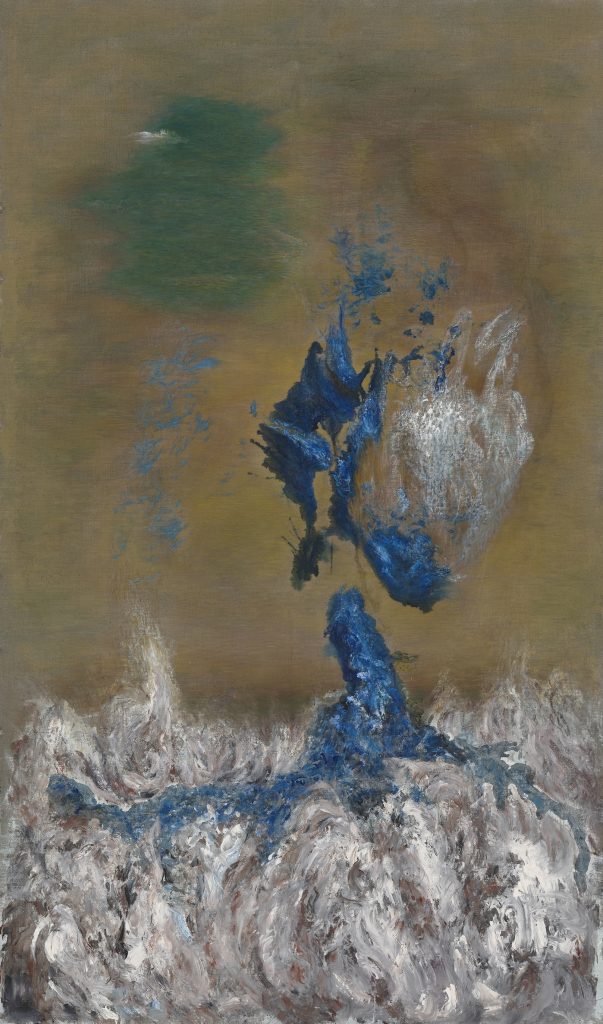
(copied from the Isabella Stewart Gardner Museum)
I had a look at work done by Hamish Fulton, who made a choice to make art resulting only from the experience of individual walks.

How to integrate this learning into my own practice: I see the connection of place/landscapes, integrating it with gestural marks and drips of paint which is so part of abstraction, but there is also a connection with spaces in between things, which could be put down as marks that was also seen. I love the almost monumental scale of the work -it is very effective to draw in a viewer. Am I ‘hiding’ away from being a ‘performer’; Wei surely integrated his different skills in a very effective way and shown confidence to explore and apply these skills very integrated. I admire the fluidity as well as the scale of the works that he achieved.
Bibliography
Mao, Christopher 2007, Curator’s Essay – Movements Paintings by Shen Wei, Chambers Fine Arts pdf accessed on webpage of the artist (14 June 2021)https://www.gardnermuseum.org/experience/virtual-shen-wei/english
Artist TONY ORRICO
The work, Penwald:5:wrists on walk, 2011 was an amazing performance to watch – I cannot think how he could do it for 90 minutes. One sees utter focus, bodily involvement and commitment to the task set at hand as he very creatively moves around to continuously work only with his wrists -almost manipulating his fingers, and when you add the endurance and precision and grace with which he works, it is really a remarkable performance. Somewhere I read that he was seen as a ‘human spirograph’. Looking at how he interacts with his work to bring gestural marks onto a canvas/paper support reminds me of meditative and automatism as practice.
